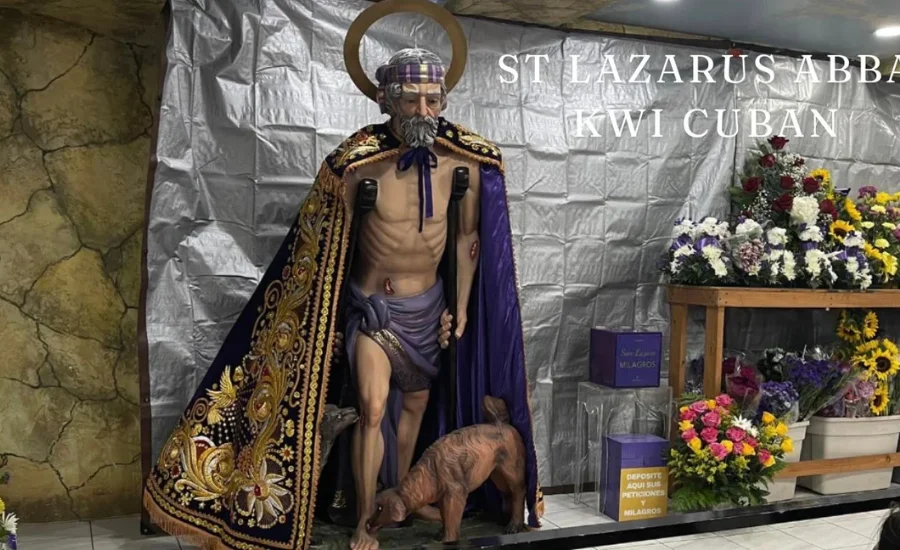St lazarus abba qui cuban, many people immediately recall the biblical figure who was miraculously resurrected by Jesus Christ. However, another significant figure named St. Lazarus, known as Abba Qui, holds profound spiritual relevance within Afro-Cuban religious practices. This essay delves into the unique historical and cultural aspects of St lazarus abba qui cuban, examining his role and influence within Cuban society. By exploring his historical roots, cultural importance, and the rituals associated with him, this study aims to provide a comprehensive understanding of St lazarus abba qui cuban and the deep veneration he inspires among many Cubans.
What is the Significance of St lazarus abba qui cuban
A striking and symbolic element of St lazarus abba qui cuban representation is his connection with dogs. In Afro-Cuban religious traditions, where St. Lazarus is often identified with Babalu Aye, he is frequently depicted with two loyal dogs by his side. This imagery is infused with deep significance, representing loyalty, empathy, and the dignity of enduring suffering.
The inclusion of dogs in these depictions is not merely for decoration; it carries profound symbolic meaning. These animals are viewed as steadfast companions who remain devoted even during times of difficulty and marginalization. In this light, the dogs symbolize the idea that every person, regardless of their hardships or social status, deserves compassion and respect. This resonates strongly within Cuban culture, where dogs are cherished symbols of loyalty and protection.
Furthermore, the association between St. Lazarus and his dogs conveys a broader societal message: the sick, the impoverished, and the marginalized possess intrinsic value and deserve to be treated with kindness and respect. This symbolism enriches the understanding of St lazarus abba qui cuban veneration, highlighting his role not only as a healer but also as a protector of all who suffer. Through this imagery, St. Lazarus stands as a symbol of hope and humanity, advocating for the dignity and care of every individual.
An Introduction to Santería
To fully appreciate the role of St lazarus abba qui cuban, it’s important to first understand Santería, the religious framework in which his veneration is most prominent. Santería, also known as Regla de Ocha, originated in Cuba during the era of the transatlantic slave trade. Enslaved Africans brought their Yoruba spiritual practices to the Caribbean, where they merged with Roman Catholic traditions. This fusion created a syncretic religion in which Yoruba deities, or Orishas, were associated with Catholic saints.
In this context, Babalu Aye—who corresponds to St. Lazarus in the Catholic tradition—is a key Orisha within Santería. Babalu Aye is revered as a deity of illness, healing, and protection.
The Fusion of Catholicism and Santería in Cuban Culture
The reverence for St lazarus abba qui cuban culture exemplifies a remarkable instance of religious syncretism, where different spiritual traditions intertwine to form a unique and cohesive practice. This blending is particularly evident in the way Catholic devotion to St. Lazarus merges with the Santería worship of Babalu Aye. This fusion not only demonstrates the flexibility and endurance of religious practices but also adds a rich dimension to the spiritual experiences of many Cubans.
In this syncretic tradition, the Catholic image of St. Lazarus—often portrayed as an elderly, frail figure—contrasts with the Santería depiction of Babalu Aye. Catholic representations typically show St. Lazarus in a state of vulnerability, reflecting his biblical story of suffering and miraculous healing. Conversely, Santería altars present Babalu Aye dressed in modest burlap and marked by sores, often leaning on crutches. This portrayal underscores his role as a deity associated with healing and protection, highlighting his deep connection with those experiencing illness and hardship.
The Impact of St lazarus abba qui cuban on Modern Cuban Society
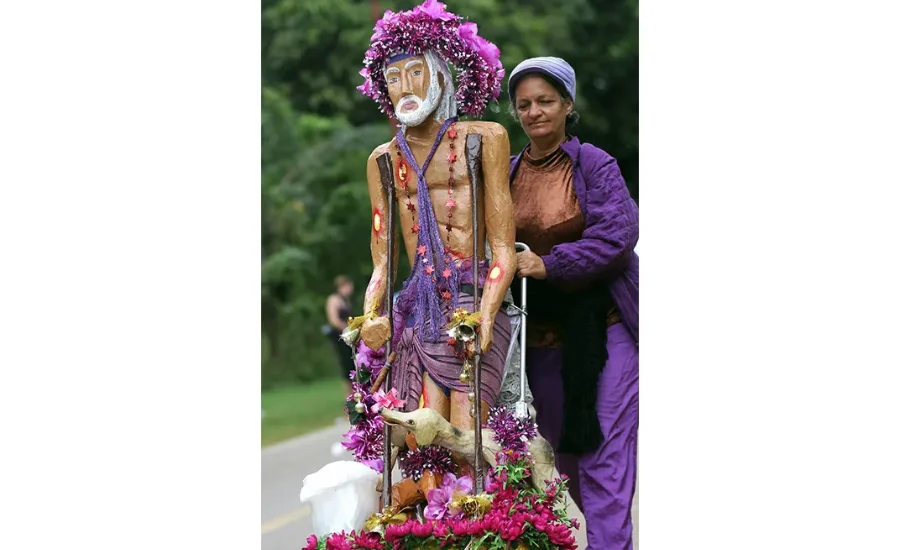
The influence of St lazarus abba qui cuban extends beyond religious devotion, significantly shaping Cuba’s cultural and social fabric. His veneration reflects the resilience, faith, and hope intrinsic to the Cuban identity, especially during times of adversity. Many Cubans seek St. Lazarus’ protection and guidance, illustrating his crucial role as a source of strength and comfort in their lives.
The Fusion of Catholicism and Santería in Cuban Culture
The devotion to St lazarus abba qui cuban exemplifies a fascinating instance of religious syncretism, where Catholic and Santería traditions merge to form a distinct and meaningful practice. This synthesis combines the Catholic veneration of St. Lazarus with the Santería worship of Babalu Aye, creating a unique spiritual tradition that holds significant importance for many Cubans.
This blend is evident in both ritual practices and visual representations. For instance, Catholic churches often display statues of St. Lazarus as a frail elderly man, while Santería altars typically depict Babalu Aye in humble burlap garments, marked by sores and using crutches. Both depictions carry profound spiritual significance and illustrate the dual nature of this revered figure in Cuban culture.
The Emphasis on Humility and Respect
St lazarus abba qui cuban is deeply revered for his association with humility and respect, virtues that are central to his veneration. Devotees approach him with earnest intent, seeking his aid or protection, with the belief that such sincerity will be met with divine blessings. This emphasis on humility is not unique to St. Lazarus but is a key theme across both Santería and Catholicism. In these traditions, engaging with the divine requires a heart that is pure and intentions that are sincere. This principle underscores the importance of approaching spiritual practices with respect and genuine reverence, aligning one’s actions with the values of humility and gratitude.
The Impact of St lazarus abba qui cuban on Contemporary Cuban Society
The influence of St lazarus abba qui cuban extends well beyond religious rituals, profoundly shaping the cultural and social landscape of Cuba. His veneration serves as a reflection of the Cuban people’s enduring faith, resilience, and hope, particularly in the face of adversity. During challenging times, Cubans turn to St. Lazarus not only for spiritual guidance but also for emotional and psychological support. His role as a source of strength and reassurance is evident in the widespread practices and traditions that honor him. This connection highlights how deeply ingrained St. Lazarus is in the fabric of Cuban life, symbolizing a source of comfort and stability amid uncertainty.
St. Lazarus and the Pursuit of Health and Healing
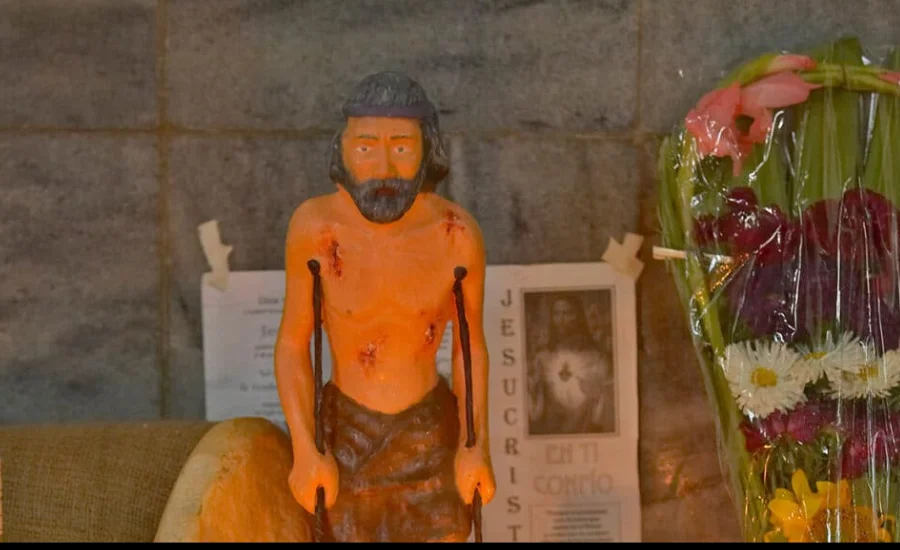
In matters of health and recovery, St. Lazarus Abba Kwi is a prominent figure revered for his healing powers. Devotees frequently invoke his assistance for a range of health issues, from minor ailments to serious medical conditions. This belief in his capacity to provide relief and healing is deeply rooted in the tradition, with many attributing miraculous recoveries to his intervention. The faith in his healing abilities is not merely a spiritual belief but a tangible part of the community’s approach to health and wellness.
Beyond the realm of physical healing, the rituals and traditions associated with St. Lazarus also offer significant emotional comfort and support. These practices create a sense of community and shared purpose among devotees, providing a supportive network for those in need. The collective devotion fosters an environment where individuals can find solace and reassurance, reinforcing the communal bonds that are central to the veneration of St. Lazarus.
Celebrations and Cultural Events for St. Lazarus
The Feast Day of St. Lazarus is a major cultural and religious celebration in Cuba, marking an event that transcends mere ritualistic observance. The festivities encompass a rich tapestry of cultural expressions, including music, dance, food, and communal gatherings. This day serves as an important occasion for Cubans to reconnect with their heritage, celebrate their faith, and honor the enduring spirit of resilience and hope embodied by St. Lazarus.
During this annual celebration, the streets come alive with vibrant activities, as people from various backgrounds come together to pay homage to St. Lazarus. The event not only strengthens religious and cultural ties but also provides a platform for expressing gratitude and reverence. For many, the Feast Day is a moment to reflect on the virtues of St. Lazarus and to celebrate the collective strength and unity of the community, highlighting the profound impact of his legacy on Cuban culture and society.
Rituals and Practices Honoring St lazarus abba qui cuban
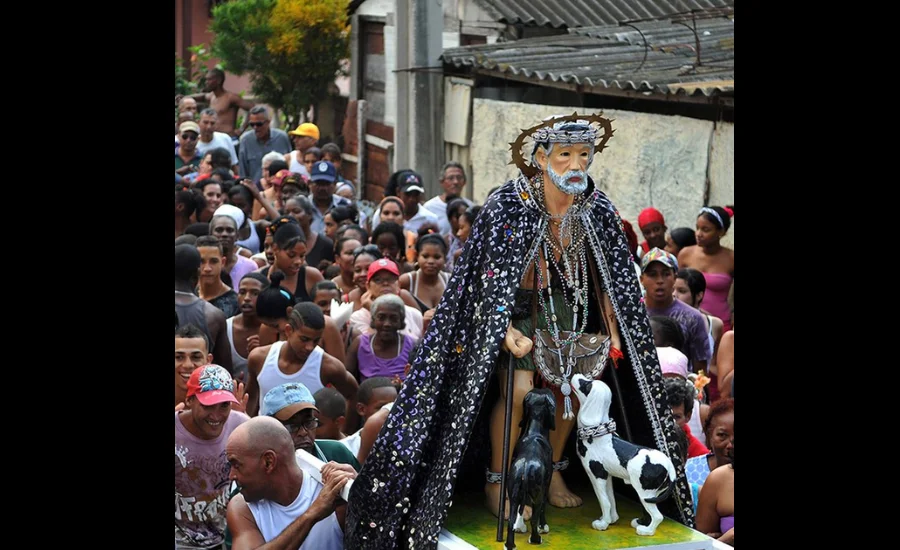
Rituals dedicated to St lazarus abba qui cuban are vibrant and deeply embedded in Cuban spirituality. Devotees often set up altars adorned with an array of offerings including flowers, candles, and images of the saint. These altars act as central points for prayers and offerings, reflecting the deep reverence people hold for him.
A key celebration occurs on December 17th, a day marked by a major pilgrimage to the El Rincón shrine, located near Havana. Devotees travel to this sacred site carrying symbolic items such as crosses and small statues of St. Lazarus. This pilgrimage underscores the saint’s importance and the devotion of his followers.
Food plays a significant role in these observances, with many preparing special dishes as a sign of gratitude and devotion. These meals are often shared with family and friends, strengthening community bonds and celebrating the saint’s influence.
Animal offerings are also a notable aspect of the rituals. Some devotees present roosters or other livestock as a gesture of respect and hope for blessings from St. Lazarus. This practice emphasizes the reciprocal nature of the relationship between the devotees and their revered figure.
Prominent Sites and Celebrations for St. Lazarus in Cuba
Cuba hosts several important sites dedicated to St lazarus abba qui cuban, reflecting the profound spiritual significance he holds for many. One of the most notable locations is the El Rincón shrine, situated just outside Havana. Each year, on December 17th, thousands of pilgrims visit this shrine to participate in a grand celebration. The event features altars filled with offerings of candles and flowers, and the atmosphere is alive with traditional music and dance, blending religious devotion with cultural expression.
Another significant site is the Basilica de Nuestra Señora del Cobre in Santiago de Cuba. Here, many worshippers honor St. Lazarus alongside the Virgin Mary, illustrating the interwoven nature of these religious figures in Cuban spirituality.
Beyond these major events, local communities across Cuba engage in personal rituals and celebrations, reflecting individual connections to St lazarus abba qui cuban. These local practices foster a sense of shared faith and devotion, further integrating the saint into the everyday lives of his followers.
The Global Influence of St lazarus abba qui cuban Devotion
Though St lazarus abba qui cuban is most closely linked to Cuban religious practices, his influence has extended well beyond the island. The Cuban diaspora, particularly in cities such as Miami with significant Cuban communities, has carried this devotion to new regions. In these areas, followers continue to honor St. Lazarus with the same fervor and dedication as in Cuba.
This widespread reverence underscores the lasting impact of St. Lazarus and the strong emotional connection people maintain with him. His themes of hope, healing, and protection resonate deeply, regardless of geographical location.
Connections with Other Religious Traditions
While St lazarus abba qui cuban is chiefly associated with Santería and Catholicism, there are interesting parallels with other religious traditions. For instance, the veneration of saints in Catholicism bears similarities to the worship of deities in Afro-Caribbean religions like Vodou in Haiti. In both systems, there is a focus on appealing to spiritual beings for intervention in human affairs, including seeking protection, healing, and guidance.
This broader connection highlights a common human quest for spiritual support and illustrates how different cultures address this need through their distinct religious practices.
Integrating St lazarus abba qui cuban into Your Spiritual Practice
Adorn this area with images or symbols of St. Lazarus, including representations of the iconic dog. Enhance the space with candles, fresh flowers, and fruits to create a reverent atmosphere.
Allocate time each week for focused reflection and prayer directed towards St. Lazarus. Use this time to openly share your hopes, concerns, and aspirations, fostering a deeper personal connection with him.
You might also adopt specific rituals associated with St. Lazarus, such as lighting a candle on his feast day or joining in local celebrations if available. Engaging in these practices can help strengthen your spiritual bond.
Including offerings like food or beverages during these moments of devotion can further enrich your practice. These acts of giving become a tangible expression of your gratitude and reverence.
Maintaining consistency in these practices is essential; regular devotion will help integrate St. Lazarus Abba Kwi into the rhythm of your daily life, enhancing your spiritual journey.
Key Insights About St lazarus abba qui cuban
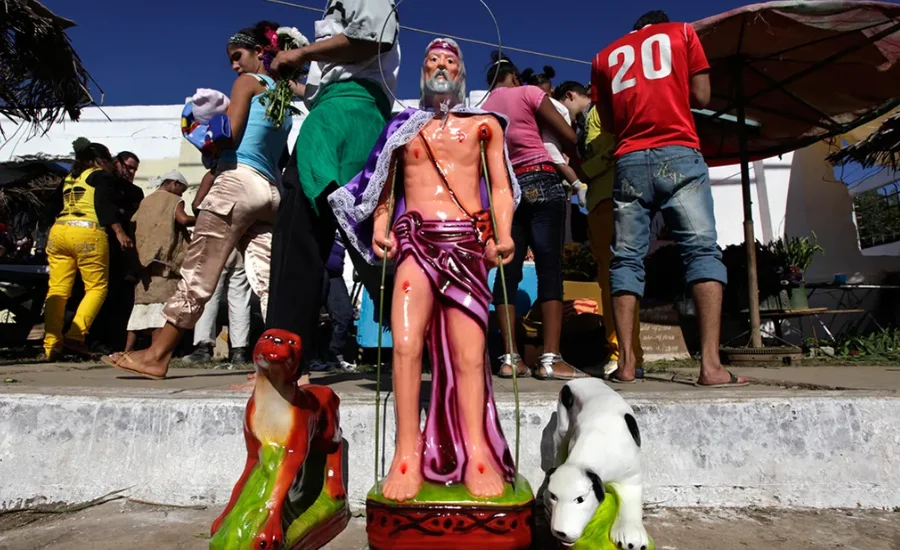
- Syncretic Identity: St lazarus abba qui cuban represents a unique fusion of the Catholic St. Lazarus and the Yoruba deity Babalu Aye, embodying elements from both traditions.
- Cultural Reverence: In Cuban culture, particularly within Santería, St. Lazarus Abba Kwi is venerated as a powerful healer and protector, reflecting his deep spiritual significance.
- Annual Pilgrimage: The pilgrimage to El Rincón shrine is a major religious event in Cuba, attracting thousands of worshippers each year who come to honor St. Lazarus.
- Religious Fusion: His worship highlights the blending of Catholic and Yoruba elements, a defining feature of Afro-Cuban religious practices that illustrates the syncretic nature of these traditions.
- Symbolic Role: St. Lazarus Abba Kwi is a central figure in both the spiritual and cultural fabric of Cuba, symbolizing qualities such as resilience, healing, and hope.
Also read: Kimbsxo
Final Words
St. Lazarus Abba Qui Cuban, a revered figure in Afro-Cuban spirituality, epitomizes the profound syncretism of Catholicism and Santería. Merging the Catholic St. Lazarus with the Yoruba deity Babalu Aye, he is celebrated for his healing powers and protective nature. Central to Cuban culture, St. Lazarus Abba Qui is honored with vibrant rituals, including the major pilgrimage to the El Rincón shrine, where thousands gather annually. His depiction with dogs symbolizes loyalty and compassion, reflecting his role as a protector of the marginalized and suffering. This fusion of traditions underscores the resilience and spiritual depth within Cuban society, highlighting St. Lazarus Abba Qui’s enduring influence and the rich cultural tapestry of Afro-Cuban practices.
Explore the best deals on footwear at Incredible Wave.

